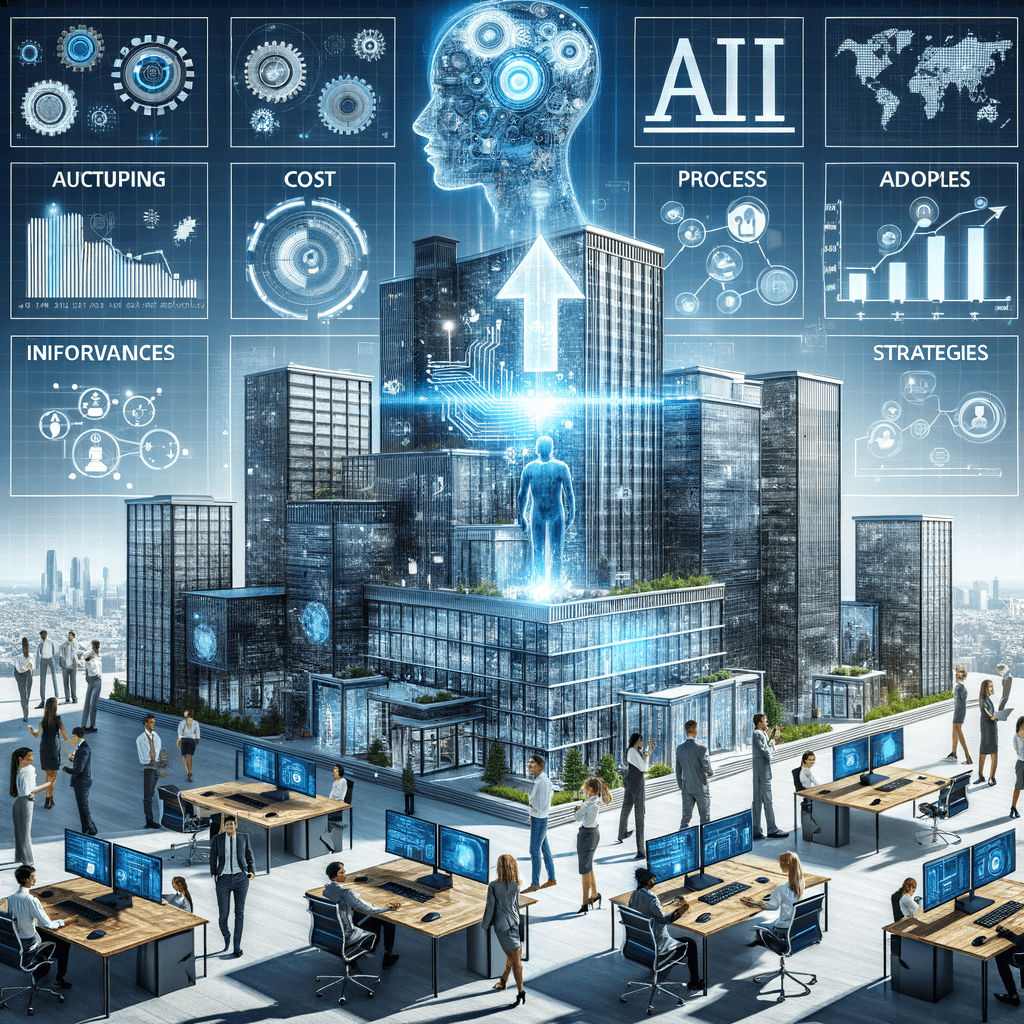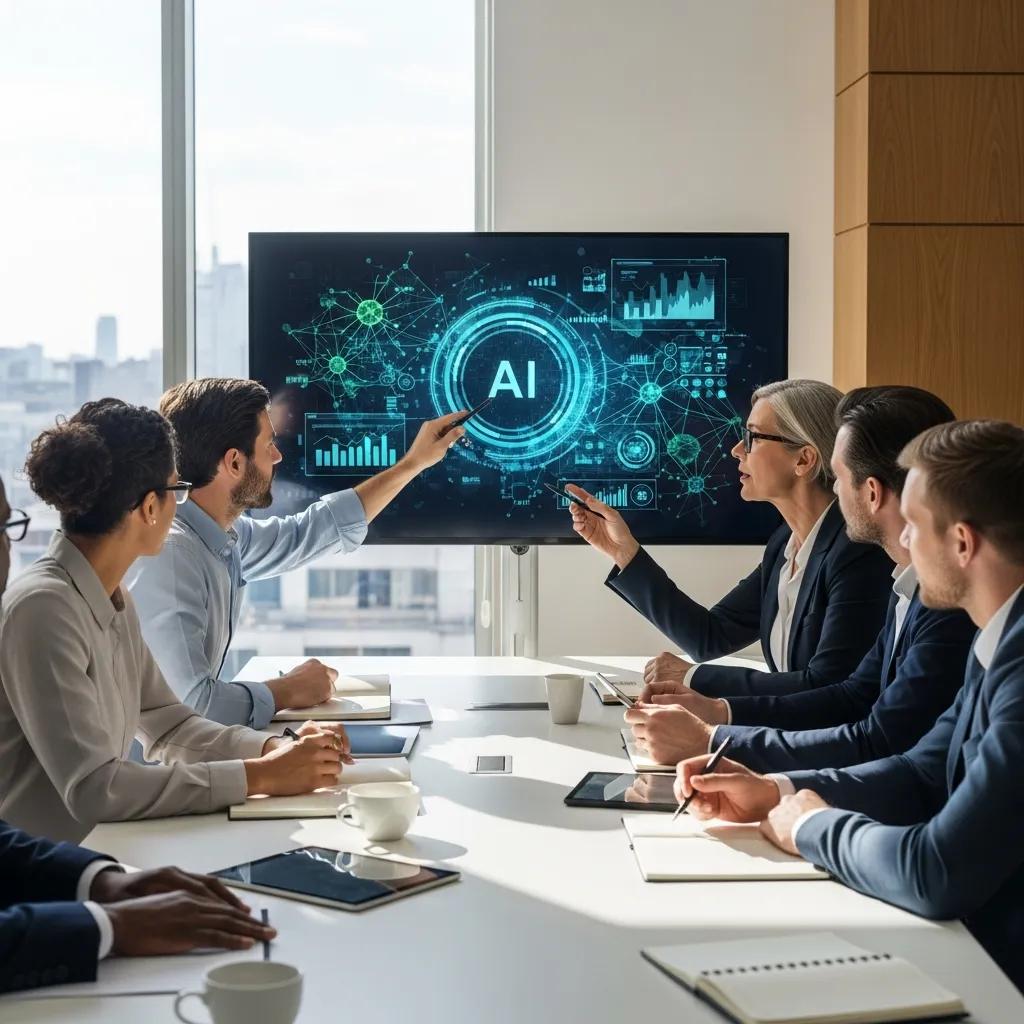As a business owner, you’re always looking for ways to improve your business. You’ve likely heard about AI, and you’re interested in its potential. But figuring out where to start with AI integration services can be confusing.
This post clarifies AI integration for small and mid-sized business leaders. You’ll learn the core aspects of AI integration, how to tailor it to your needs, and see examples of businesses using AI to grow and create more fulfilling work experiences. This involves integrating AI into existing systems to address specific business challenges. Look for an AI solution that aligns perfectly with your specific business.
What is AI Integration Service?
An AI integration service helps you incorporate the power of artificial intelligence into your current business operations. It’s about weaving AI into your workflows to solve business challenges.
AI integration aims to improve customer experience and operational efficiency. Look at any integration process to make sure it truly works for your business and business goals.
Why Integrate AI into Your Business?
Think about the repetitive tasks that take up your employees’ time. AI integration empowers employees to automate tasks and focus on more engaging work. An example of such integration can be the automation of repetitive tasks. AI services, such as chatbots or machine learning tools, can streamline operations and optimize productivity.
This allows you to offer better services to your customers. As one study shows, businesses using AI see improvement in areas such as revenue and operational efficiency.
Types of AI Integration Services
AI integration services can include natural language processing, large language models (LLMs), and predictive analytics. These services are usually part of an overall predictive maintenance program. This blend of artificial intelligence creates systems integration.
| Service | Description |
|---|---|
| Custom AI Solutions | Building AI customized to your needs, rather than using generic products. |
| Pre-built AI Service Integration | Connecting available AI tools, like Google Cloud AI, into your existing systems. |
| Data Engineering | Preparing and organizing data for AI systems (data engineering services.) |
How Much Does AI Integration Cost?
AI integration costs vary widely. Costs can range from $10,000 to over $200,000. Focusing on your business’s needs during this process is very important to make sure integration is done in a streamlined and productive manner, and with less stress.
AI Integration: A Step-by-Step Process
A well-structured AI integration process ensures smooth implementation and aligns with your specific business. This integration process usually starts with building the infrastructure to support your competitive advantage. ChatGPT integration can give your business the infrastructure build it needs.
- Assess Your Needs: Determine how AI fits into your business. Identify problems you want AI to solve and envision how it can improve your bottom line.
- Choose the Right AI Solution: Research various AI providers and types of services. Evaluate which solution best addresses your project requirements.
- Data Preparation: Ensure your data is accurate and ready for AI integration.
- Pilot and Refine: Test your AI integration thoroughly before full implementation. Make any adjustments based on pilot data.
- Rollout and Ongoing Optimization: Gradually introduce AI across your company. Continuously monitor and refine your AI integration.
Successful AI Integration Strategies
Integration challenges shouldn’t hinder you from implementing beneficial AI software. A solid integration strategy ensures AI solutions align perfectly with your business objectives.
- Have a Clear Business Strategy: Define a fixed target for AI integration. More information on successful AI integration strategies.
- Focus on Data Quality: Prioritize high-quality data to effectively train AI models. Just like healthy food powers your workday, accurate data fuels your AI system for success.
- Leverage AI Expertise: Collaborate with expert AI engineers and integration specialists to achieve desired business outcomes.
- Engage Your Team: Incorporate tools like AI virtual assistants to simplify employee tasks. Encourage adoption through effective change management and ongoing training for these new AI tools.
Examples of AI Integration
Envision employees using virtual assistants for routine tasks, freeing them up for more critical work. Imagine AI tools providing predictive insights to enhance sales strategies (consider an AI sales assistant.)
These are examples of how AI integration services boost productivity and employee engagement. Also having AI integration is also having an expert AI infrastructure built into your current operations which provides the latest AI and technological advancements tailored to your particular industry through AI development. Data analytics also can give powerful data visualization capabilities to any business which has a large impact in making important data-driven decisions based on visual interpretations which greatly simplify interpretations compared to the past.
FAQs about ai integration service
What is AI integration service?
AI integration service involves incorporating AI technologies, such as machine learning and natural language processing, into business operations. The goal is to increase efficiency, productivity, and performance. Chatbot development can take customer service to another level.
How much does it cost to integrate AI?
AI integration costs vary, ranging from $10,000 to over $200,000. Factors like project scope and complexity affect cost. Custom AI solutions and integrating pre-built AI services each have distinct price points.
What is the integration of AI?
AI integration is the process of incorporating AI technologies into existing systems and workflows. This often involves leveraging cloud AI, like Google Cloud or Azure, along with custom solutions for particular use cases, like for content creation or for optimizing your business processes by making use of large language models in existing workflows to do things more effectively without adding any new human-level intervention such as editing of output or review of output in various sections of existing workflows.
AI integration services also include goal setting, IT assessment, data preparation, team training, AI model selection, pilot testing, and ongoing optimization. One common aim of AI integration is improving customer service using AI’s capabilities for personalized experiences.
What is an example of an AI service?
An example is an AI-powered chatbot that enhances customer experience (see examples on LeewayHertz). Customers interact with these bots to get quick answers to their questions, streamlining support and freeing human agents to focus on more complex issues.
Conclusion
AI integration services aren’t just about technology; they empower businesses. Strategic AI integration can save time and money, boost revenue, improve efficiency, enhance service quality, and streamline processes.
Software integration services with AI elevate customer engagement to new levels. They enable rapid, detailed communication through a combination of bots and trained personnel. It helps create a positive impression on AI customer interactions.



